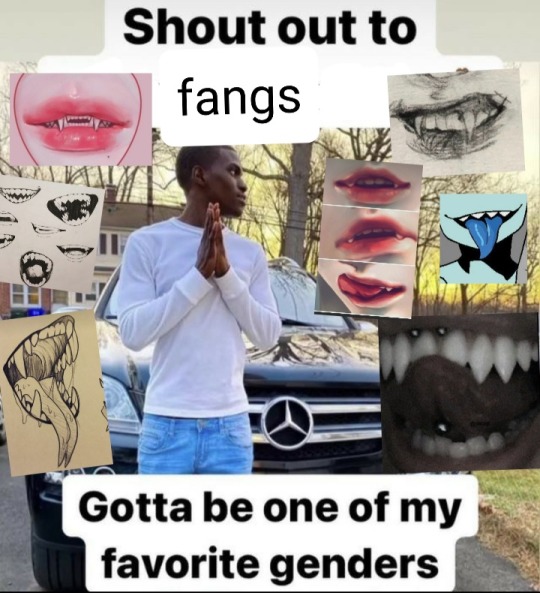20 | 王意欣 | they/them | Spoonie genderfluid witch | Priestess in training | Nature Empath | Italian
Don't wanna be here? Send us removal request.
Text
Apollo: Well, if you're not at least a little bit gay for your friends, what kind of friend are you?
122 notes
·
View notes
Text
Hellenic History PDFS
A collection of free Hellenic History PDFs, from the Bronze Age to Modern day Greece. If you are interested in works about Ancient Greek Religion, please look through my blog as I give them away freely.
if you struggle with opening a PDF or need a pdf that is locked behind a paywall, use sci-hub to access them.
Bronze Age
Cline, E. H. (2012). The Oxford Handbook of the Bronze Age Aegean. OUP USA. [link]
Dickinson, O. (2007). The Aegean from Bronze Age to Iron Age: Continuity and Change Between the Twelfth and Eighth Centuries BC (1st ed.). Routledge. [link]
Harding, A. (2021). Bronze Age Lives. Berlin, Boston: De Gruyter. [link]
Knapp, B. A., & Dommelen, V. P. (2015). The Cambridge Prehistory of the Bronze and Iron Age Mediterranean (Illustrated ed.). Cambridge University Press. [link]
Taylor, Lindsay, (2019) The Snake Goddess Dethroned: Deconstructing the Work and Legacy of Sir Arthur Evans. Honors College. [link]
Archaic Greece
Dillon, M., & Garland, L. (2010). Ancient Greece: Social and Historical Documents from Archaic Times to the Death of Alexander the Great (Routledge Sourcebooks for the Ancient World) (3rd ed.). Routledge. [link]
Raaflaub, K. A., & Wees, V. H. (2012). A Companion to Archaic Greece (1st ed.). Wiley-Blackwell. [link]
Rayor, D. J., & Johnson, W. R. (1991). Sappho’s Lyre: Archaic Lyric and Women Poets of Ancient Greece (First ed.). University of California Press. [link]
Shapiro, H. A. (2007). The Cambridge Companion to Archaic Greece (Cambridge Companions to the Ancient World). Cambridge University Press. [link]
Classical Greece
Kinzl, K. H. (2010). A Companion to the Classical Greek World (1st ed.). Wiley-Blackwell. [link]
Sourvinou-Inwood, C. (1996). “Reading” Greek Death: To the End of the Classical Period. Clarendon Press. [link]
Hellenistic and Roman Greece
Bugh, G. R. (2006). The Cambridge Companion to the Hellenistic World (Illustrated ed.). Cambridge University Press. [link]
Erskine, A. (2005). A Companion to the Hellenistic World. Wiley-Blackwell. [link]
Stevens, K. (2019). Between Greece and Babylonia: Hellenistic Intellectual History in Cross-Cultural Perspective (Cambridge Classical Studies). Cambridge University Press. [link]
Byzantine Greece
Garland, L. (2011). Byzantine Empresses: Women and Power in Byzantium AD 527–1204 (1st ed.). Routledge. [link]
Hussey, J. M., & Louth, A. (2010). The Orthodox Church in the Byzantine Empire (Oxford History of the Christian Church) (Illustrated ed.). Oxford University Press. [link]
K. (2021). Alexiad (09) by Komnene, Anna [Paperback (2009)]. Penguin Clasics, Paperback(2009). [link]
Lauritzen, F. (2013). The Depiction of Character in the Chronographia of Michael Psellos (Studies in Byzantine History and Civilization). Brepols Publishers. [link]
Neville, L. (2019). Byzantine Gender (Past Imperfect) (New ed.). Arc Humanities Press. [link]
Psellos, M., & Kaldellis, A. (2006). Mothers and Sons, Fathers and Daughters: The Byzantine Family of Michael Psellos (Michael Psellos in Translation) (1st ed.). University of Notre Dame Press. [link]
Psellos, M., Papaioannou, S., & Barber, C. (2017). Michael Psellos on Literature and Art: A Byzantine Perspective on Aesthetics (Michael Psellos in Translation) (1st ed.). University of Notre Dame Press. [link]
Shepard, J. (2009). The Cambridge History of the Byzantine Empire c.500-1492 (1st ed.). Cambridge University Press. [link]
Venetian possessions and Ottoman rule (15th century – 1821)
Davies, S., & Davis, J. L. (2007). Between Venice and Istanbul: Colonial Landscapes in Early Modern Greece (Hesperia Supplement) (Volume XL ed.). American School of Classical Studies at Athens. [link]
Halstead, H. (2018). Greeks without Greece: Homelands, Belonging, and Memory amongst the Expatriated Greeks of Turkey (Routledge Studies in Modern European History) (1st ed.). Routledge. [link]
Naar, D. E. (2016). Jewish Salonica: Between the Ottoman Empire and Modern Greece (Stanford Studies in Jewish History and Culture) (1st ed.). Stanford University Press. [link]
Vionis, A. K. (2013). A Crusader, Ottoman, and Early Modern Aegean Archaeology: Built Environment and Domestic Material Culture in the Medieval and Post-Medieval Cyclades, … Studies Leiden University Press). Leiden University Press. [link]
Zarinebaf, F., Bennet, J., & Davis, J. L. (2005). A Historical and Economic Geography of Ottoman Greece: The Southwestern Morea in the 18th Century (Hesperia Supplement). American School of Classical Studies at Athens. [link]
Modern Greece
Avdela, E., Gallant, T., Papadogiannis, N., Papastefanaki, L., & Voglis, P. (2017). The social history of modern Greece: a roundtable. Social History, 43(1), 105–125. https://doi.org/10.1080/03071022.2018.1394037 [link]
Beaton, R. (2004). Folk Poetry of Modern Greece (Revised ed.). Cambridge University Press. [link]
Featherstone, K., Papadimitriou, D., Mamarelis, A., & Niarchos, G. (2011). The Last Ottomans: The Muslim Minority of Greece 1940–1949 (New Perspectives on South-East Europe) (1st ed. 2011 ed.). Palgrave Macmillan. [link]
Honor, Masculinity, and Ritual Knife Fighting in Nineteenth-Century Greece. (2000). The American Historical Review. Published. https://doi.org/10.1086/ahr/105.2.359 [link]
McGuckin, J. A. (2010). The Orthodox Church: An Introduction to its History, Doctrine, and Spiritual Culture (1st ed.). Wiley-Blackwell. [link]
Books That Cover Multiple Eras
Carney, E. D., & Müller, S. (2020). The Routledge Companion to Women and Monarchy in the Ancient Mediterranean World (1st ed.). Routledge. [link]
James, S. L., & Dillon, S. (2015). A Companion to Women in the Ancient World (Blackwell Companions to the Ancient World) (1st ed.). Wiley-Blackwell. [link]
Llewellyn-Jones, L. (2003). Aphrodite’s Tortoise: The Veiled Woman of Ancient Greece (Illustrated ed.). Classical Press of Wales. [link]
Mackridge, P. (2010). Language and National Identity in Greece, 1766–1976 (Illustrated ed.). Oxford University Press. [link]
Ober;, J. (2021). The Rise and Fall of Classical Greece (The Princeton History of the Ancient World) by Josiah Ober (2015–05-04). Princeton University Press; First Edition edition (2015–05-04). [link]
Petropoulos, J. (2014). Greek Magic (Monographs in Classical Studies) (1st ed.). Routledge. [link]
Rawson, B. (2011). A Companion to Families in the Greek and Roman Worlds (Blackwell Companions to the Ancient World Book 86) (1st ed.). Wiley-Blackwell. [link]
Tziovas, D. (2016). Greek Diaspora and Migration since 1700. Taylor & Francis. [link]
I hope this collections helps y’all with knowing more about Greek History - I haven’t read them all, and that is something I plan to fix. Feel free to recommend more books, knowledge is good!
743 notes
·
View notes
Text
Traversing the Paths on the Tetractys of Life

So, we have our Tetractys of Life. For simplicity’s sake, let’s ignore the letters on the paths and focus just on the existence of the paths. First, let’s talk about having a single “path” (really, a network of paths between individual sphairai) that traverses the whole Tetractys sphere by sphere. I propose the following schema:
Mercury
Air/Jupiter
Fire/Mars
Sulfur/Sun
Mercury
Salt/Moon
Earth/Saturn
Water/Venus
Mercury
Light/Fixed Stars
Monad
Darkness/Earth
Graphically, the paths on the Tetractys selected between these sphairai look like this:

I’ll bet you’re confused. For one, we have twelve spheres listed, with Mercury being listed three times; shouldn’t we have to go through each sphere only once? Second, we’re starting with Mercury and not the Monad; shouldn’t we start with the Monad being the All and the Source of all? Well, sorta. I’ll admit, my background in qabbalah was inhibiting me from running with this sequence of paths, but then, mathesis is not qabbalah, and the Tetractys is not the Tree. In Hermetic qabbalah or Jewish kabbalah, we have a clearly defined start and end, a Source and a Destination, and either of them will be Kether or Malkuth depending on whether you’re going up or down the Tree. However, while the Tree is like an elaborate map, the Tetractys presents us with something different, like a blueprint. Instead of showing how things come to be in a linear fashion, the Tetractys shows the presence and building blocks of life present in all things; the Tetractys shows how things come to be in a nonlinear fashion. There is no single end goal with the Tetractys; the Monad descends into the Tetrad, not any one of the four elements alone. All the parts of the Tetractys must be constantly and repeatedly traversed to become complete both of ourselves and of the cosmos, encompassing all aspects of the act, process, and result of Creation.
As for passing through the sphaira of Mercury, let’s talk about what we’re doing on the paths first. We start with what looks like the Mitsubishi logo around the Tetractys: three rhombuses each with one acute corner at the Mercury sphaira and the other acute corner at one of the distant corners of the Tetractys. I’ll call each of these three sets of four sphairai a system, and each system focuses on a particular theme:
The Hot System involves the active principles of Air, Fire, and Sulfur. Processes of power, actively causing change.
The Cold System involves the passive principles of Salt, Earth, and Water. Processes of reception, passively receiving change
The Cosmic System involves the encompassing principles of Light, the Monad, and Darkness. Processes of cosmic stasis and unity.
In each case, we both start and end at Mercury, both astrologically and alchemically, being the center and present in nearly all things except the purest and most extreme of all elements: Earth, Fire, and the Source itself. Everything else is connected with Mercury, so it makes sense that it’s the only one that can reasonably allow us to translate between the three systems. Yes, we can go from Water to Air (traversing the Cold and Hot Systems directly), Sulfur to Light (Hot and Cosmic), or Salt to Darkness (Cold and Whole), but a better balance can be preserved and future progress can be assured by always returning to Mercury. If we spend some time in the Hot System, we should pass from Sulfur through Mercury to Salt, because Mercury is what naturally balances the two forces. At the end of the Cold System, we pass from Water/Venus to Light/Stars; though it’s not immediately apparent how Mercury balances these two, consider the myth of Aphrodite being born from Ocean (Water) from the remains of Ouranos (Sky); the ability to create physically comes from supercelestial impetus and the latter is accomplished by the former, but also consider the endless horizon is the meeting point of the two realms. At the end of the Cosmic System, we proceed from Darkness to Air; again, an awkward comparison to make, but recall that in the Poemander myth of creation, air is what separated the heavens from the mixed mass that would eventually become the Earth, and the ability to begin the process of rising and falling through the spheres is accomplished by means of air as an intermediary. Mercury is a symbol of strong change, but not in a way that changes something into its direct opposite; rather, Mercury changes something into its complement, something that completes and links the two systems together.
The use of systems here isn’t just to provide a way to go through all the sphairai of the Tetractys in one go. Rather, within each system are four sphairai and four paths, forming a kind of mini-tetractys within each system in a mini-cycle. While one can traverse each system once to complete the whole Tetractys, I see it being worthwhile to cycle through each system several times to really grok and complete the work that needs to be done in each. If we consider the three phases of alchemy (nigredo, albedo, rubdeo), then each system can be viewed as one of these stages, and it may take time for the Work from each phase to settle in. Going through each stage of the work thoroughly requires several iterations; for instance, cycling through the Hot system four times would yield a pass each to focus on the ideas of Hot, Hot-Air, Hot-Fire, and Hot-Sulfur. By cycling not only through the Tetractys as a whole but within each system on the Tetractys, we can begin to fully understand each force in its entirety and on its own terms.
All this leads to the cycle of paths that this “Mitsubishi” arrangement forms. We start with Mercury then descend into the Hot System by progressing to Air, drying ourselves into Fire, and rarefying ourselves into Sulfur. From there, we return to Mercury, cooling down and becoming pure Salt, degrading into Earth, then quickening into Water. After that, we return to Mercury, ascend into the Light, achieve union or the image of the Source, then descend back down to Darkness. From there, we repeat the process over again, returning to Mercury and heating up again into Air, cycling through the Tetractys infinitely and repeatedly, each time becoming more powerful with each sphaira and each time achieving more and more of the henosis that is the Great Work. So, a full set of iterations to proceed throughout the whole Tetractys in this manner would involve a total of four stages that I tentatively call Initiations, progressing through the different systems or within the same system to obtain a deeper understanding of each force. Keeping the same order within each system, the whole schema looks like this:
Hermetic Initiation
Hot System (Mercury → Air → Fire → Sulfur)
Cold System (Mercury → Salt → Earth → Water)
Cosmic System (Mercury → Light → the Monad → Darkness)
Hot Initiation
Hot System with a focus on Mercury (e.g. a deeper acquaintance of the Hot forces)
Hot System with a focus on Air (e.g. seeing Air and how it relates and acts throughout the Hot forces)
Hot System with a focus on Fire (e.g. same as above but with Fire)
Hot System with a focus on Sulfur (e.g. etc.)
Cold Initiation
Cold System with a focus on Mercury
Cold System with a focus on Salt
Cold System with a focus on Earth
Cold System with a focus on Water
Cosmic Initiation
Cosmic System with a focus on Mercury
Cosmic System with a focus on Light
Cosmic System with a focus on the Monad
Cosmic System with a focus on Darkness
And, after this, we’d repeat the whole thing over again as many times as desired or as necessary until we achieve the Great Work. Besides, by completely cycling through the whole Tetractys (at least in the Hermetic Initiation) starting and ending with Mercury, we hit Mercury four times, and four is a number mythologically sacred to Hermes. And, if we consider all the Initiation passes together, we pass through the entire Tetractys a total of five times.
So, in this manner, we have a set of twelve paths traversing three systems within the Tetractys. Each system is composed of four sphairai, all starting with and ending with Mercury; Mercury is then a liminal point between the three “worlds”, both starting and ending each set of paths within an system. We constantly proceed from and return to Mercury as a central hub or nexus. However, with our twelve Mitsubishi paths, we leave another set of twelve paths unused. What are these paths?

These twelve paths never touch central Mercury or the extreme Earth, Fire, or Monad sphairai at all, but instead connect the six “middling” sphairai of Darkness, Salt, Water, Air, Sulfur, and Light. Two cycles are presented here, shown by the hexagram paths (inner cycle) and hexagon paths (outer cycle). Instead of having systems, we have one group of six sphairai that are each connected to everything but their complement (e.g. Salt and Sulfur, Water and Light) and four leftovers that are unconnected which would link everything else together. Rather than getting us to henosis and the Monad, or alternatively to a fundamental understanding of how our cosmos works through Earth and Fire, these cycles keep us trapped, never able to each any extreme and never having the ability to reasonably transform ourselves into anything we need to progress.
Between the Mitsubishi paths and hexagram/hexagon paths, I think we have a distinction of how things progress within the cosmos as shown by the Tetractys. The hexagon and hexagram paths indicate a cycle of reincarnation, always stuck hovering around and just under the things that truly break them out but never quite within reach; the one thing that can do that is Mercury, which they constantly rely on but never call upon. We’ll call these set of paths the Agnosis Schema, as opposed to the Mitsubishi paths which I’ll call the Gnosis Schema. The Gnosis Schema connects all the sphairai together and in a way that encourages, well, enlightenment in almost a Buddhist sense of extinguishing the process of forced rebirth and reincarnation, freeing ourselves from the trap of maya or ignorance that keeps us in the cycle of being reborn without our control. In other words, the Gnosis Schema allows us to be reborn by choice and free ourselves from this Hermetic samsara, which is a world of difference from the Agnosis Schema; we can deliberately choose to go to places that we’d never end up in involuntarily or by accident. We continue around the Gnosis Schema as long as we need or desire to until that last iteration where we go to the sphaira of the Monad and stay there, never returning to Darkness to continue the cycle. (And, of course, metempsychosis or reincarnation was indeed a belief of Pythagoreanism and Neo-Platonism, so I’m in the right here to bring that beast of a topic into this.)
So, going back to the Gnosis Schema of paths, we can use the order of them to figure out a numerical assignment from 1 to 10 of the sphairai on the Tetractys of Life. Again, if we start with Mercury as the start, we assign it the number 1 and proceed along the Gnosis Schema paths in order, skipping over where Mercury is repeated:
Mercury
Air/Jupiter
Fire/Mars
Sulfur/Sun
Salt/Moon
Earth/Saturn
Water/Venus
Light/Fixed Stars
Monad
Darkness/Earth
This system of numbers is grossly different from that of the qabbalistic scheme of things, and rightly so. We’re not describing a path of linear descent from the Source to the World, but a means of cyclical progressive process that continually builds one up further and further until they reach the Highest without having to go down lower anymore. Described numerically, the Tetractys looks like the following:

Bear in mind that, although each of the sphairai are associated with some celestial heaven (from the Prime Mover to the World we live in), these numbers do not describe their level. The celestial numbers of the heavens stay as they are, such that Saturn is still the third heaven (from the Top), and so forth. If we were to compare the cosmological number of each of the sphairai (based on their planets) with the Gnosis Schema numbering (based on their alchemical force), we end up with the following table (which is an exercise in polyvalent thinking):

Note that two of the sphairai, the Monad and Mercury, are essentially the same when it comes to what their force is: the planetary force of Mercury and the alchemical force of Mercury are so close that they’re conceptually synonymous. Likewise, the Monad is…well, the Monad. There’s literally only one Monad in any system of thought here. However, look at the numbers: we see two of the sphairai, those of Venus/Water and Darkness/World, have the same number in both systems. While these are the exceptions to the rule, they’re exceptions worth noticing. That Darkness/World is 10, the final stage in the emanatory process, is unsurprising; it is completion, it is the ending, it is the goal of creation to create the World. Although it is present in the Dyad in contrast to Light/Fixed Stars and thus “comes first” before anything lower, the entirety of the World can only exist when all the other forces are present to give it life, animacy, and agency. As for Water/Venus, it’s interesting that it’s kept the number seven between the two, that of essence and quality of life. It’s low down on the Tetractys as part of the Tetrad, but all the same it’s vital to giving things animacy, as opposed to Darkness/World which is what is given animacy.
Personally, I feel it appropriate to comment on what the Gnosis/Agnosis Schemas mean for the individual letters of the paths themselves. For instance, note that all the Air paths (letters Υ, Φ, Ψ, Σ, Δ, Μ) are all part of the Agnosis Schema, as well as the other fixed signs (letters Φ, Κ, Ν) as well as the other elemental paths (letters Χ, Ξ, Θ). The twelve letters that belong to the Gnosis path are Ο, Ζ, Π, Ε, Η, Λ, Τ, Ω, Α, Β, Ρ, and Ι, which are the six non-fixed non-Air signs and the six non-Jupiter planets. However, all I’ve done so far is figure out which abstract paths to take regardless of their letters; I fully expect my Tetractys of Life to have its letter-path assignments change over time as I fine tune and explore the system deeper. The system, as of now, is coherent and structured, which I like, but who knows whether it’s actually valid and practical to use. That’s what further writing and scrying is for, and now that I have an actual path to pathwork, I think that process should begin soon.
737 notes
·
View notes
Photo

Hermes is considered to be Trismegistus in mysticism, not just because he’s able to move among different planes and dimensions, but cause he’s also associated with other deities or personalities and becomes enriched and expanded this way. As first Hermes the Egyptian god Thoth emerges, he’s the “Source of Logos”, the one forming the nature of reality, the things he utters become instantly true, his speech is a powerful spell of creation. He’s the sublime mind, the fountain of inspiration. The mystical wisdom that springs from the pages of the sacred books, the god of hermeneutics, new meanings and insights. This tradition presents as second Hermes the reformist and for some heretic Pharaoh Akhanaten. He was the one abandoning the traditional Egyptian pantheon to focus his worship on the glorification of the solar disk that takes the name of “Aten”. Ancient art depicts Akhenaten as rather otherworldly and androgynous, he’s perhaps some kind of Hermaphroditus (son of Hermes). Akhenaten saw the sun as the Source of all things, of all creative power and initiative. Behind the sun as planetary body there was a refined essence hiding responsible for a spiritual nutrition of the highest form and frequency, one surpassing earthly limitations. Some claim that Akhenaten discovered the Emerald Tablet, Hermes’ deepest work and contribution and that he based his religion on this revelation and grace. Apollonius of Tyana appears to be the third aspect or face of Hermes Trismegistus. A personality legendary and enigmatic. It is said that Apollonius found the Emerald Tablet inside a cave and that Alexander the Great had hidden the tablet there. Apollonius is considered to be a great master of humanity, a great avatar. The oldest translation of the Emerald Tablet into Arabic is attributed to Apollonius. Hellenistic Alexandria was his field of action. Hermes embodies the guiding spirit over the centuries, he’s the air of change and information, the one providing higher insights if one is ready and synchronized to accept his guidance. He acts from afar and in depth, he’s the god of analysis in general and of psychoanalysis in specific, a force of intuition and fertility, metaphorically or literally. A god of unifications beyond polarities suggesting us to be adaptive and with a rather wicked sense of humor, that sees underneath the surface connecting us with the Source, the One Thing of the alchemists. V.B. Image: An Allegory of Alchemy by the Circle of Bartholomaus Spranger, between circa 1546 and circa 1611.
1K notes
·
View notes
Text
Alchemical substances
Cadmia, which was also called Tuttia or Tutty, was probably zinc carbonate. Philosophers’ Wool, or nix alba (white snow). Zinc oxide made by burning zinc in air. Called Zinc White and used as a pigment. White vitriol. Zinc Sulphate. Described by Basil Valentine. Made by lixiviating roasted zinc blende (zinc sulphide). Calamine. Zinc carbonate. Corrosive sublimate. Mercuric chloride. first mentioned by Geber, who prepared it by subliming mercury, calcined green vitriol, common salt and nitre. Calomel. Mercurous chloride. Purgative, made by subliming a mixture of mercuric chloride and metallic mercury, triturated in a mortar. This was heated in a iron pot and the crust of calomel formed on the lid was ground to powder and boiled with water to remove the very poisonous mercuric chloride. Cinnabar. Mercuric sulphide. Turpeth mineral. A hydrolysed form of mercuric sulphate. Yellow crystalline powder, described by Basil Valentine. Mercurius praecipitatus. Red mercuric oxide. Described by Geber. Cinnabar or Vermillion. Mercuric sulphide. Mosaic gold. Golden-yellow glistening scales of crystalline stannic sulphide, made by heating a mixture of tin filings, sulphur and salammoniac. Tin salt. Hydrated stannous chloride. Spiritus fumans. Stannic chloride, discovered by Libavius in 1605, through distilling tin with corrosive sublimate. Butter of tin. Hydrated stannic chloride. Galena. Plumbic sulphide. Chief ore of lead. Lead fume. Lead oxide obtained from the flues at lead smelters. Massicot. Yellow powder form of lead monoxide. Litharge. Reddish-yellow crystalline form of lead monoxide, formed by fusing and powdering massicot. Minium or Red Lead. Triplumbic tetroxide. Formed by roasting litharge in air. Scarlet crystalline powder. Naples yellow, or Cassel yellow. An oxychloride of lead, made by heating litharge with sal ammoniac. Chrome yellow. Lead chromate. Sugar of Lead. Lead acetate, Made by dissolving lead oxide in vinegar. White lead. Basic carbonate of lead. Used as a pigment. Venetian White. Mixture of equal parts of white lead and barium sulphate. Dutch White. Mixture of one part of white lead to three of barium sulphate. Antimony. From latin ‘antimonium’ used by Constantinius Africanus (c. 1050) to refer to Stibnite. Glass of Antimony. Impure antimony tetroxide, obtained by roasting stibnite. Used as a yellow pigment for glass and porcelain. Butter of Antimony. White crystalline antimony trichloride. Made by Basil Valentine by distilling roasted stibnite with corrosive sublimate. Glauber later prepared it by dissolving stibnite in hot concentrated hydrochloric acid and distilling. Powder of Algaroth. A white powder of antimonious oxychloride, made by by precipitation when a solution of butter of antimony in spirit of salt is poured into water. Stibnite. Antimony trisulphide. Grey mineral ore of antimony. Wismuth. Bismuth. Pearl white. Basic nitrate of bismuth, used by Lemery as a cosmetic. Chrome green. Chromic oxide. Chrome yellow. Lead chromate. Chrome red. Basic lead chromate. Chrome orange. Mixture of chrome yellow and chrome red. Green Vitriol. Ferrous sulphate. Rouge, Crocus, Colcothar. Red varieties of ferric oxide are formed by burning green vitriol in air. Marcasite. Mineral form of Iron disulphide. Oxidises in moist air to green vitriol. Pyrites. Mineral form of iron disulphide. Stable in air. Cobalt. Named by the copper miners of the Hartz Mountains after the evil spirits the 'kobolds’ which gave a false copper ore. Zaffre. Impure cobalt arsenate, left after roasting cobalt ore. Nickel. Named by the copper miners of Westphalia the 'kupfer-nickel’ or false copper. Copper glance. Cuprous sulphide ore. Aes cyprium. Cyprian brass or copper. Cuprite. Red cuprous oxide ore. Blue vitriol or bluestone. Cupric sulphate. Verdigris. The green substance formed by the atmospheric weathering of copper. This is a complex basic carbonate of copper. In more recent times the term 'verdigris’ is more correctly applied to copper acetate, made by the action of vinegar on copper. Resin of copper. Cuprous chloride. Made by Robert Boyle in 1664 by heating copper with corrosive sublimate. Lunar caustic, lapis infernalis. Silver nitrate. Fulminating silver. Silver nitride, very explosive when dry. Made by dissolving silver oxide in ammonia. Horn silver, argentum cornu. A glass like ore of silver chloride. Luna cornea. The soft colourless tough mass of silver chloride, made by heating horn silver till it forms a dark yellow liquid and then cooling. Described by Oswald Croll in 1608. Purple of Cassius. Made by Andreas Cassius in 1685 by precipitating a mixture of gold, stannous and stannic chlorides, with alkali. Used for colouring glass. Fulminating gold. Made by adding ammonia to the auric hydroxide formed by precipitation by potash from metallic gold dissolved in aqua regis. Highly explosive when dry. Quicklime. Calcium oxide. Slaked lime. Calcium hydroxide. Chalk. Calcium carbonate. Gypsum. Calcium sulphate. Natron. Native sodium carbonate. Soda ash. Sodium carbonate formed by burning plants growing on the sea shore. Caustic marine alkali. Caustic soda. Sodium hydroxide. Made by adding lime to natron. Common salt. Sodium chloride. Glauber’s Salt. Sodium sulphate. Wood-ash or potash. Potassium carbonate made from the ashes of burnt wood. Caustic wood alkali. Caustic potash. Potassium hydroxide. Made by adding lime to potash. Liver of sulphur. Complex of polysulphides of potassium, made by fusing potash and sulphur. Sal Ammoniac. Ammonium Chloride. Described by Geber. Sal volatile, Spirit of Hartshorn. Volatile alkali. Ammonium carbonate made from distilling bones, horns, etc. Caustic volatile alkali. Ammonium hydroxide. Nitrum flammans. Ammonium nitrate made by Glauber. Brimstone (from German Brennstein 'burning stone’). Sulphur. Flowers of sulphur. light yellow crystalline powder, made by distilling sulphur. Thion hudor (Zosimus refers to this as the 'divine water’ or 'the bile of the serpent’). A deep reddish-yellow liquid made by boiling flowers of sulphur with slaked lime. Milk of sulphur (lac sulphuris). White colloidal sulphur. Geber made this by adding an acid to thion hudor. Oil of Vitriol. Sulphuric acid made by distilling green vitriol. Realgar. red ore of arsenic. Arsenic disulphide. Orpiment. Auri-pigmentum. Yellow ore of arsenic. Arsenic trisulphide. White arsenic. Arsenious oxide. Made from arsenical soot from the roasting ovens, purified by sublimation. Aqua tofani. Arsenious oxide. Extremely poisonous. Used by Paracelsus. King’s Yellow. A mixture of orpiment with white arsenic.

4K notes
·
View notes
Photo
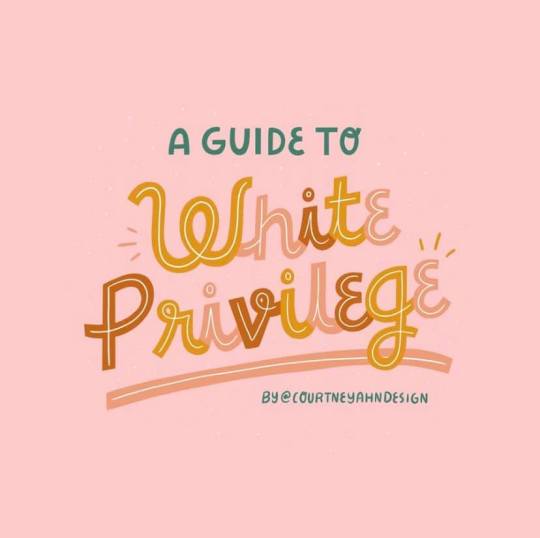



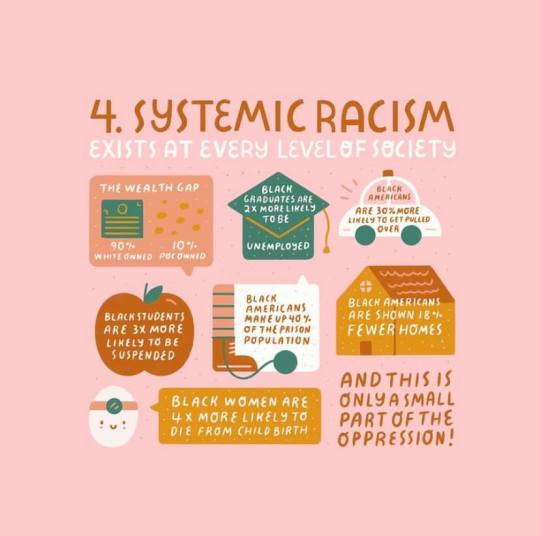

A Guide to White Privilege by COURTNEYAHNDESIGN
1. White Privilege doesn’t mean your life hasn’t been hard. It means your skin tone isn’t one of the things making it harder! There’s plenty of other privileges (socio-economic, male, heterosexual, cisgender, christian, able-bodied) but white privilege is perhaps the most enduring throughout history.
2. White Privilege exists as a direct result of both historic and enduring racism, biases, and practices designed to oppress people of color.
3. White Privilege means you actively benefit from the oppression of POC You are the dominant representation on all media No on questions your citizenship Products are designed for you 1st People at work look like you You don’t get harassed for existing in public locations Inherited power and wealth Your actions aren’t perceived as those of all your race
4. Systemic racism exists at every level of society. The wealth gap (90% White owned vs 10% POC owned) Black graduates are 2x more likely to be unemployed Black americans are 30% more likely to get pulled over Black students are 3x more likely to be suspended Black americans make up 40% of the prison population Black americans are shown 18% fewer homes Black women are 4x more likely to die from childbirth And this is only a small port of the oppression
5. What would I do with my White Privilege?
Teach other White folks the barriers to success for POC Promise to listen to and amplify the voices of POC Be more than “not racist” but actively anti-racist Confront racial injustices even when it’s uncomfortable.
3K notes
·
View notes
Text

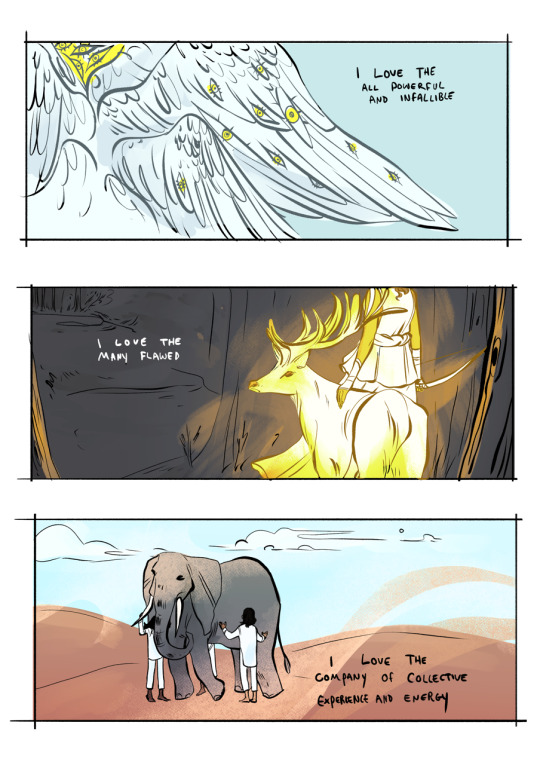

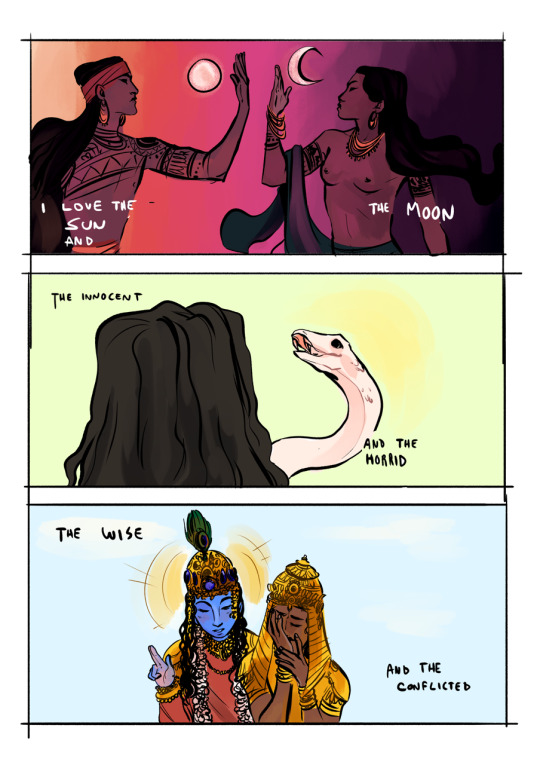

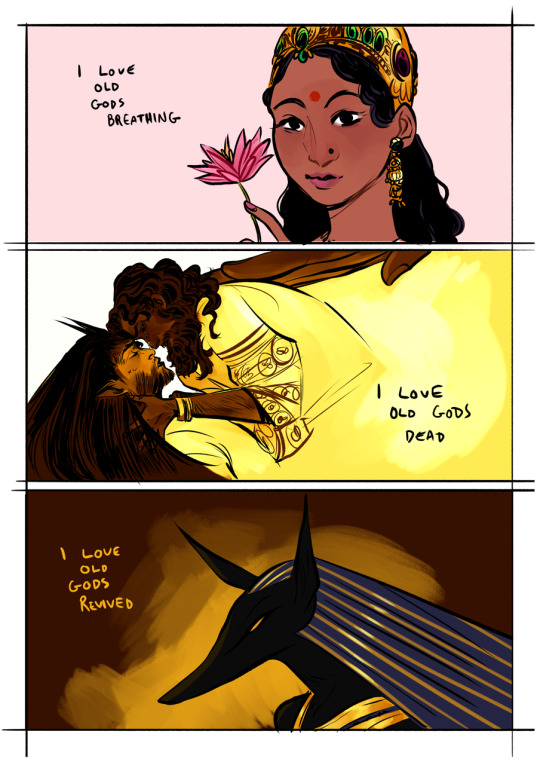

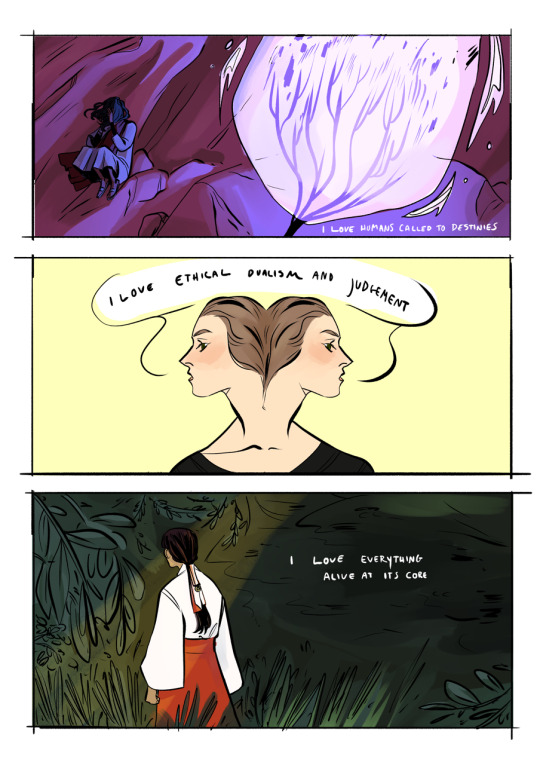
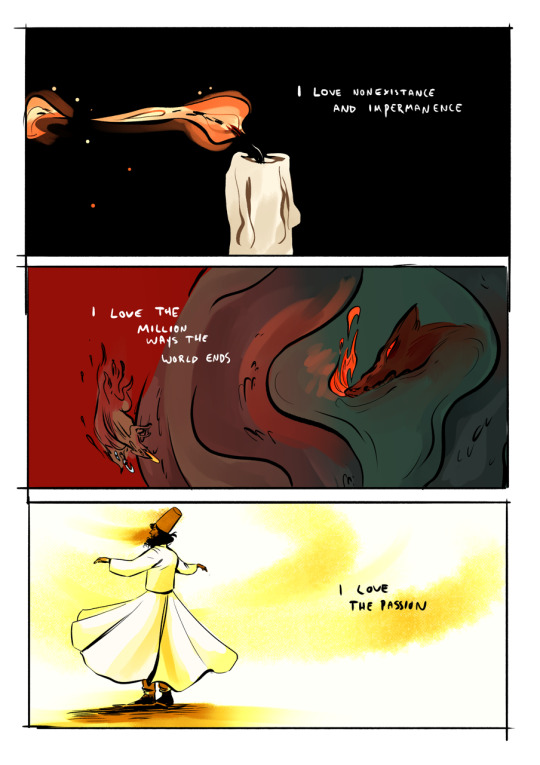

I have a really complex relationship with religion, but here’s something positive
117K notes
·
View notes
Text
It’s Hekate’s Deipnon tomorrow, so take time tomorrow to clean your shrines and cleanse your home!!! This is your monthly reminder to take care of yourself, your home, and your sacred spaces!
120 notes
·
View notes
Text
Things I did to improve my worship:
(note this is not some guide, I'm not saying all or any of these will work for you, I'm just sharing some things I did to better improve my relationship with my deities in the context of my worship, and my understanding of my faith)
Less worrying what's on an altar, more time at my altar
Less trying to do what others are doing, more recording what I'm doing
Less talking about my worship, more prayer
Less worrying about specific and special offerings, more offerings of what I have available
Less looking for signs, more divination
More research not limited to my own faith
Less "go big or go home", more small gestures
2K notes
·
View notes
Video
If you listen, her tapping very much adds to the music.
107K notes
·
View notes
Note
hi 💗 I was wondering if you'd be willing to do a ship for hp lightning era? I'm an aries, a Hufflepuff and an INFJ. I'm a knowledge sponge and love to learn new things! I have books on anatomy, astronomy, proper herbology, the meaning of flowers, etc etc. I have long blonde hair and big, pale blue eyes and freckles, too. personality wise, I thrive off of relationships where I can banter with someone. I have a really soft personality despite being a bit of a snark sometimes. I love sappy romances and I write poetry and love to play piano. I'm a planner by nature, so I kinda always have neat notes w/highlighters and a planner with all my life figured out, but I still really value spontaneity. I'm actually quite sensitive though I don't let on (due to years of being bullied). I struggle with severe anxiety, depression and OCPD but right now I'm trying take control of my "fate". tired of depression ruling my life, the norm. I am an empath, to the point that I've had friends say I'm "psychic" (lol) because I can guess what they're thinking and I've predicted events moments before they've happened. it's really just intuitiveness 🤷🏼♀️ thank you!!!
Hi love!
Thanks so much for requesting!
I was torn between two characters so I wrote a little drabble for both! I hope you don’t mind!
..
..
..
..
..
..
..
..
..
..
So first up:

Neville Longbottom
Neville is an absolute sweetheart. You and him were in the same Herbology class and bonded over your mutual interest in the subject.
He’s super shy around you at first because you’re pretty and smart and he’s nervous. As you guys talk more, he finds himself slowly falling for you.
He finds out that you’re into romance novels and reads a few you lend him. He ends up feeling super self concious because he could never be smooth and confident like Mr. Darcy or any of the other characters you held so close to your heart.
You two are casually sitting by the fireplace when he asks you if you want to date someone like the hero’s in the novels the read.
You laugh and say, “God no, these are just books, I like them, but I don’t need a Mr. Darcy.”
In a moment of boldness he asks, “What do you need?”
You blush and look away shyly, “I need someone who will make me laugh. Someone who will remind me that it’s okay to not be okay.”
Neville warmed at your words, “Well they do say ‘marry your best friend’ for a reason.”
You bit your bottom lip nervously, “You are my best friend.”
He blushed, panicking a bit, “Oh, I didn’t mean to imply anything, or make you uncomfortable. Maybe I should just leave-“
You cut him off with a kiss that surprises him as much as it surprises you.
You guys start dating and he’s a very attentive boyfriend. When you’ve had a bad day, he’ll cuddle with you and read you a book.
The second person I ship you with is...
..
..
..
..
..
..
..
..
..
..

Fred Weasley!
Okay, okay, hear me out. Fred and you balance each other out perfectly.
He teases you endlessly because our boy can not cope with having a crush. All the teasing is very lighthearted and makes you blush more than anything, but if he ever does say something hurtful, he’ll instantly pick up on it and apologize.
He never pranks you, and doesn’t let George prank you either.
During Herbology, he plucked your book out of your hand and started reading from it, making little comments about it. “He kissed her ardently,” he read, before fake swooning.
In private, you would have found it funny, but you were in class and painfully aware of the 20 something students around you.
Your eyes fill with tears of frtustration and embarrassment, and he immediately stops. You snatch the book out of his hand and run out of class.
He feels horrible. For the next week, he literally follows you around like a lost puppy. Fred is shit with words, but he writes(or attempts at least) to write you a poem. It’s absolutely horrible, but it makes you laugh and smile to yourself.
He has a plethora of pet names for you, “Sunshine,” “Darling,” “Blondie,” and “Flower” being among his favourites.
He goes absolutely soft when you play the piano. It’s actually kind of entertaining to see your loud, outspoken Fred turn into a cuddly, sleepy boyfriend.
He also likes to listen to you read to him. Despite him insisting he doesn’t like your romance novels, he’s actually hooked. “Fine Darling... I guess you can read it to me if you want... *sigh* ” “Freddie, you’re not fooling anyone.”
You enjoy playfully bantering with each other, which always ends in uncontrollable laughter.
He tries to be spontaneous, but understands not to push you. He’ll say, “I have a surprise!” and shock you with a romantic picnic.
When you’re having a bad mental health day, he’s there for you. He’ll cuddle with you, make sure you eat and drink, and remind you how much you mean to him.
On your one month anniversary, he surprises you with a bouquet of flowers. He tells you the arrangement means, “I love you and you’re my everything.”
“I talked to a muggle florist, he was very helpful!”
He looks so proud of himself and you don’t have the heart to tell him that the flowers actually conveyed, “My head is a carrot.”
50 notes
·
View notes
Text
Hot take: Darcy’s character arc isn’t unrealistic because he doesn’t fundamentally change as a person. Elizabeth calls him out on his behaviour being at odds with his beliefs and he realises she’s right and does some self-examination. He isn’t Changed By A Woman’s Love, he just lives up to his own idea of his best self.
"Is it in address that he improves? Has he deigned to add ought of civility to his ordinary style? for I dare not hope," [Wickham] continued in a lower and more serious tone, "that he is improved in essentials."
"Oh, no!" said Elizabeth. "In essentials, I believe, he is very much what he ever was."
582 notes
·
View notes
Note
Why is it bad to not like organized religion? I offer my peanut butter protein bar
BECAUSE PEOPLE WHO SAY “ORGANIZED RELIGION“ NEVER UNDERSTAND HOW MANY PEOPLES, CULTURES, AND BELIEFS THAT ACTUALLY ENCOMPASSES
LIKE OH YOU DONT LIKE “ORGANIZED RELIGION?“ PLEASE TELL ME YOUR CRITICISMS OF SHINTOISM AND TENGRISM, CAN YOU TELL ME THE DIFFERENCE BETWEEN BUDDHISM, HINDU-BUDDHISM, AND HINDUISM? WHAT ABOUT THE DIFFERENCES BETWEEN SUNNI AND SHIA ISLAM? OR THE DIFFERENCE BETWEEN A PROTESTANT AND A QUAKER?
THE DIFFERENCES BETWEEN THESE THINGS ARE ALL INCREDIBLY IMPORTANT, THE FACT THAT THEY ARE DISTINCT HAS MORE OFTEN THAN NOT, CHANGED THE COURSE OF HISTORY
ITS A GENERALIZATION SO BROAD AS TO BE COMPLETELY USELESS, ESPECIALLY WHEN MANY OF THESE THINGS DO LEGITIMATELY DESERVE TO BE CRITICIZED. BY STICKING THEM ALL INTO THE BUCKET OF “ORGANIZED RELIGION“ THAT YOU “DONT LIKE” YOU ARE NOT ONLY REDUCING AN ENORMOUS AMOUNT OF GLOBAL CULTURES TO A STEREOTYPE (WHICH IS RACIST) YOU ARE ALSO LOCKING YOURSELF OUT OF ANY SORT OF NUANCED UNDERSTANDING OR EFFECTIVE CRITICISM.
10K notes
·
View notes
Text
do you ever get so annoyed at everything that you start to get pissed off at even little things like a spoon clinking against a bowl or sounds of people talking
1M notes
·
View notes
